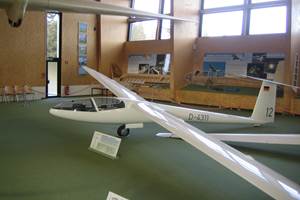Boeing forecasts $8.7 trillion aerospace and defense market through 2028
Boeing’s market outlook includes a $3.1 trillion projected demand for commercial airplanes, as operators replace older jets with more fuel-efficient models.
Released at the Paris Air Show, Boeing’s market outlook values the aerospace and defense market at $8.7 trillion over the next decade, up from $8.1 trillion a year ago.
The Boeing Market Outlook (BMO) includes a $3.1 trillion projected demand for commercial airplanes through 2028 as operators replace older jets with more capable and fuel-efficient models, and expand their fleets to accommodate the steady rise in air travel across emerging and established markets.
The BMO also projects $2.5 trillion of defense and space opportunities during the next decade as governments modernize military platforms and systems, pursue new technologies and capabilities, and accelerate exploration from sea to space. The projected spending — spanning military aircraft, autonomous systems, satellites, spacecraft and other products — continues to be global in nature with 40% of expenditures expected to originate outside of the United States.
Boeing also unveiled its 2019 Commercial Market Outlook (CMO), a longer-term forecast that delves deeper into the market for commercial airplanes and services. The newest CMO shows growing passenger volumes and increasing airplane retirements will drive the need for 44,040 new jets, valued at $6.8 trillion over the next two decades and up 3% from a year ago. The global commercial airplane fleet will also sustain the need for aviation services valued at $9.1 trillion, leading to a total commercial market opportunity of $16 trillion through 2038.
Of the new airplane deliveries, forecasters say 44% will go toward replacing aging aircraft while the rest will accommodate traffic growth. Together, the new jets support an industry where passenger traffic will grow an average 4.6% and cargo traffic will grow an average 4.2%. Factoring in the new airplanes and the jets that would remain in service, the global commercial fleet is expected to reach 50,660 airplanes by 2038. This is the first time the projected fleet has crested the 50,000 mark, Boeing says.
The biggest airplane segment remains single-aisle aircraft, as operators are projected to demand 32,420 new airplanes. This $3.8 trillion market is driven in large part by the continued strength of low-cost carriers, healthy replacement demand and continuing growth in the Asia Pacific region.
In the widebody segment, Boeing forecasts demand for 8,340 new passenger airplanes valued at more than $2.6 trillion over the next twenty years. Widebody demand is spearheaded in part by a significant wave of older airplanes that will need to be replaced beginning in a few years. Bolstering the demand for larger aircraft, operators are expected to need 1,040 new large production freighters over the forecast period.
The global airplane fleet will continue to generate significant demand for aviation services, including supply chain support (parts and parts logistics), maintenance and engineering services, aircraft modifications and airline operations. Over the next 20 years, Boeing forecasts a $9.1 trillion market for commercial aviation services with annual growth of 4.2%.
Major categories in the services forecast include the $2.4 trillion market for maintenance and engineering, which covers tasks required to maintain or restore the airworthiness of an aircraft and its systems, components and structures. Another major category is the $1.1 trillion market for flight operations, which covers services associated with the flight deck, cabin services, crew training and management and airplane operations.
According to the report, the Asia Pacific region, which includes China, will continue to lead the way in future growth, accounting for 40% of total airplane deliveries and 38% of total services value. North America and Europe round out the top three regions for future growth.
Around the world, the growing commercial fleet will require a larger supply of pilots, technicians and crews. Boeing's 2019 Pilot and Technician Outlook forecasts that the civil aviation industry will need nearly 2.5 million new aviation personnel between now and 2038.
Related Content
ASCEND program update: Designing next-gen, high-rate auto and aerospace composites
GKN Aerospace, McLaren Automotive and U.K.-based partners share goals and progress aiming at high-rate, Industry 4.0-enabled, sustainable materials and processes.
Read More9T Labs, Purdue University to advance composites use in structural aerospace applications
Partnership defines new standard of accessibility to produce 3D-printed structural composite parts as easily as metal alternatives via Additive Fusion Technology, workflow tools.
Read MoreFrom sailplanes to composites repair: Growing composite training opportunities over the years
Mike Hoke discovered his interest in the composites industry at a young age. His journey eventually led him to Abaris Training Resources, which he owned and evolved for more than 30 years.
Read MoreUniversity of Maine unveils 100% bio-based 3D-printed home
BioHome3D, made of wood fibers and bioresins and entirely 3D printed, highlights Maine’s effort to address the need for more affordable housing.
Read MoreRead Next
Next-Gen Aerospace Special Edition
Read the Next-Generation Aerospace Special Edition, produced in partnership with CompositesWorld, Modern Machine Shop and Additive Manufacturing.
Read MoreOpportunities, challenges for composites in future aircraft
As the commercial aerospace sector prepares for a new round of major program launches, the question of where and how composites will be applied weighs heavily on the supply chain.
Read MoreComposites end markets: Energy (2024)
Composites are used widely in oil/gas, wind and other renewable energy applications. Despite market challenges, growth potential and innovation for composites continue.
Read More
.jpg;width=70;height=70;mode=crop)

















.jpg;maxWidth=300;quality=90)







